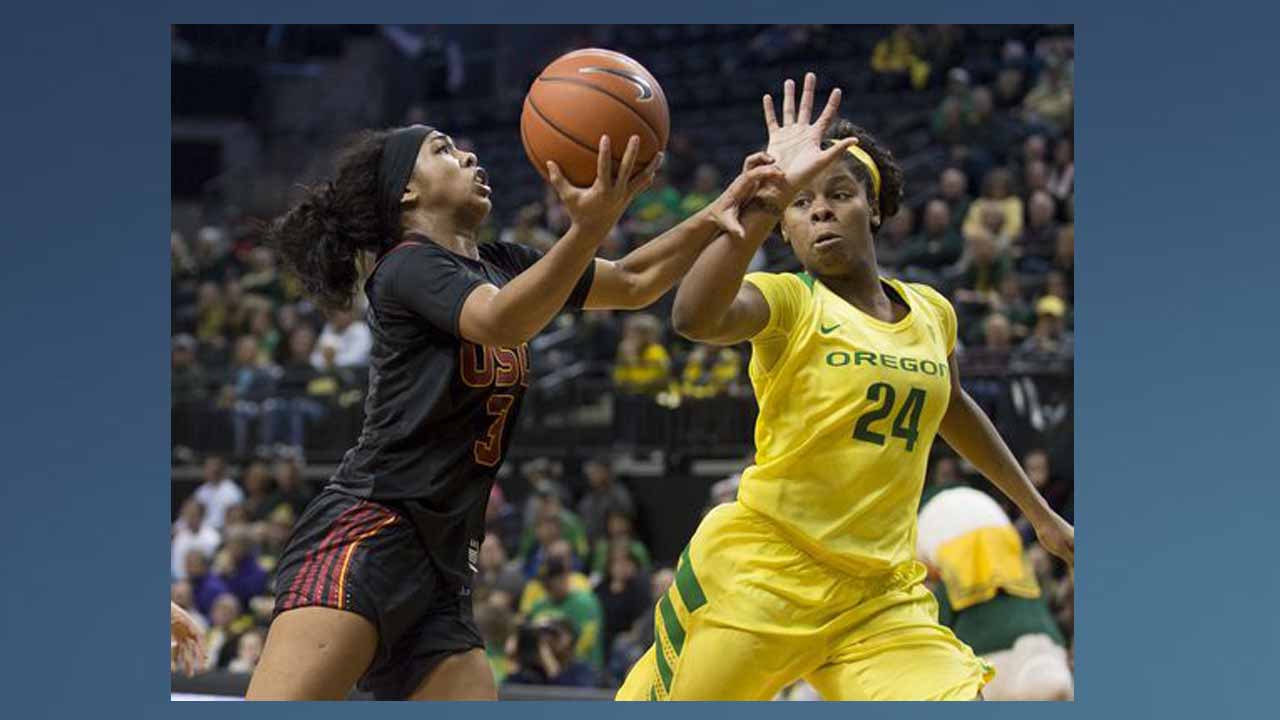As the style editor for GQ, Mark Anthony monitors and sees trends in fashion long before they hit store racks or shelves. Sometimes, however, he sees the next season’s styles not on a runway but on the hardwood.
And the models aren’t models at all, but rather the players on the seventh-grade basketball team he coaches.
“Those kids are always first to whatever is about to happen, so the moment I noticed them tuck their pants in and tuck their shorts in and their shorts were a little shorter and a little higher, that's when it got on my radar,” Anthony says.
“There's definitely a few that have their pants hiked all the way to their bird chests.”
This season in college basketball, a growing number of men’s and women’s players are employing more nuanced, subtle techniques for achieving a slimmer, shorter look to their shorts, which for a quarter century have run long and loose.
D.J. Wilson plays forward for a program, Michigan, that is widely credited with the proliferation of baggy, billowing basketball shorts since the early 1990s, when the Fab Five favored long trunks and short black socks. Like those players, Wilson’s street fashion sense drives his court couture. Except where the Fab Five went for more cloth, the 6-10 Wilson goes for much less.
He says he dresses the same in Ann Arbor as he did in high school in Sacramento, which means he wears short and slim shorts whether he’s in the gym or on the quad. “I kind of get some odd looks walking around campus,” he says.
When Michigan switched to Jordan Brand uniforms last fall, its basketball equipment manager gathered the team to try on their new togs. “I thought mine were too long,” Wilson says, “so I asked him for a shorter size and then he got it and I tried those on and I thought they were too long again, so I asked for another short size, and then we finally got it. He was patient.”
Even then, Wilson rolls over the waistband once to make them even shorter. Other players, such as Connecticut’s all-AAC point guard Jalen Adams, sometimes roll the waistband twice. But like Wilson, starting small is the key for Adams. “You can’t get the shorts too big because when you try to roll them up, it kind of feels like a whole bunch is going on,” he says. “You have to get the small size to begin with.”
Adams, who is 6-3, said he began shortening his uniforms as a youth player because he tended to be one of the smaller players on his teams and uniforms usually came large. He later found a kinship in the anti-long short lobby when he played against Derrick Jones — who placed second in the NBA All-Star Dunk Contest while wearing short shorts — in the 2015 Ball Is Life All-America Game. “We were both doing the same thing,” he says. “It's definitely coming back.”
NBA players such as Jones and Washington Wizards guard Kelly Oubre who favor short shorts do not enjoy the same level of fashion flexibility as their college counterparts. NBA players can tuck up the bottom of their shorts during practice, as Houston Rockets guard James Harden and Oklahoma City guard Russell Westbrook did in the run-up to the All-Star Game last month in New Orleans, but not in games.
“I tried to do that with my game shorts, but they said that was a violation,” says Oubre, who tries to wear men’s size mediums whenever possible despite standing 6-7. "It's comfortable, feels good. You are not worried about a lot of things swinging."
The NCAA men’s and women’s basketball rule books each devote four and a half pages to uniform regulations but only one rule — Rule 1, Section 22, Article 10 — deals with how players wear them. That rule prohibits playing with the jersey untucked from the waistband of the shorts.
“Specifically for length of shorts, there has never been a rule about length,” NCAA spokesperson Jackie Hobson said via email. “The length has always been determined by the trends and style choices of a particular era.”
Some women, like their male counterparts, roll their waistbands to shorten the length, but most commonly they tuck the bottom edge of their shorts up under their spandex under layer.
USC guard Minyon Moore began doing it to keep her shorts from catching the Velcro of the brace she wore following a knee injury suffered playing high school soccer. Now a college sophomore, she looks like she is wearing soccer shorts when playing basketball. “I just think it's more free,” she says. “I can move. I can be more agile with the short shorts look. I'm not worried about how long my shorts are or if it's going to get caught when I'm running.”
Gonzaga forward Jill Barta, who stitched together a record 37-point performance Tuesday as the Bulldogs sewed up a West Coast Conference title and NCAA tournament bid, is one of three Bulldogs players who shorten their shorts using the tuck-up technique. Fellow forward Kiara Kudron says she does it because she doesn’t like the feel of the long shorts hitting her knee when she shot free throws. Teammate and guard Zhané Templeton says she does it because her legs get sweaty when she plays, among other reasons.
“With our shorts down to our knees, we look like boxes,” she says. “Especially as a female, when you have shorts and they’re all the way down to your knees, it’s not that cute.”
Templeton says she was drawn to the look by watching old NBA videos. She remembers some of the footage included Hall of Fame guard John Stockton, perhaps the last NBA player to wear short shorts before the present-day practitioners. He also happens to be the father of another Gonzaga teammate, point guard Laura Stockton. “I actually haven’t talked to him (about his shorts), but I probably should, as much as I see him,” Templeton says.
As enthusiastic as some men's college players are about shrinking inseams, the look is more pervasive on the women's side. That makes sense to Anthony, the GQ style editor.
“It's all cyclical, but in men's fashion the turnover is a lot slower than women,” he says. “They just have a higher metabolism than we do. And there's certain things I'm sure will come back — it's like square-toed shoes may come back, but it's not going to happen in the next 50 years.”
Though Anthony questions whether a widespread short shorts resurgence is imminent, he won’t rule it out, especially if a transcendent player wears them from the moment he enters the NBA.
“Let's start with how shorts became longer: It wasn't because it helped them jump higher or run faster or because the uniforms were being made by Nike instead of Adidas,” Anthony says. “It was because Michael Jordan thought they looked cooler, the Fab Five thought they looked cooler, and that was a fashion statement outside of the game of basketball. And so they changed.
“If you look at the way men wear their clothes now, no one's wearing baggy suits, and things are just different. So to think that it's not possible, history would say otherwise.”
Wilson remains steadfast that shorter shorts’ time is now. He points to his numerous Twitter direct messages and notifications from high school players as evidence. “I definitely think it’s something that’s going to trend upwards,” he says.
In more ways than one.


